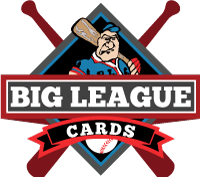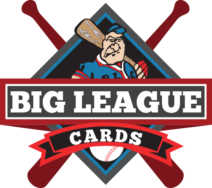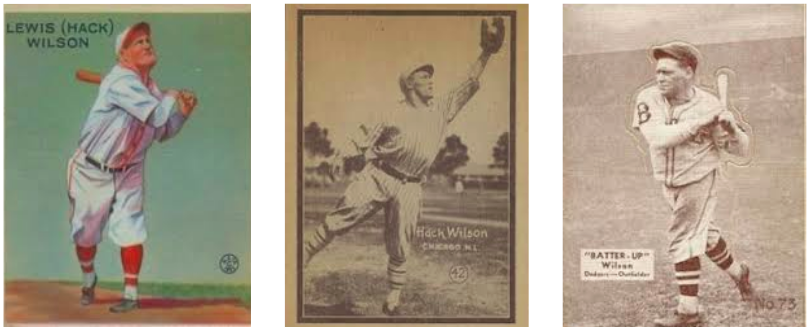Inside the Pack: The 5 Most Undervalued Vintage Players
Last week, I took a look at the five players whose vintage cards I felt had the most long-lasting staying power in the marketplace. This week, I’ll talk about five players whose cards I feel are undervalued relative to their careers. Like last week, I chose one player from each two-decade span, but chose 2 players from the 1960s-1970s because there are more players to pick from in that span and more baseball cards available from those years.
1900s-1910s: Tris Speaker – Speaker was one of the premier players of the 1910s and into the 1920s. Playing mostly for Boston and Cleveland, Speaker compiled a lifetime .345 average, .428 on base percentage, and .500 slugging percentage while accumulating 3514 career hits and 792 lifetime doubles — a record that still stands today. His chief rival, Ty Cobb, hit .366 with a .433 on base percentage and .512 slugging percentage, quite similar stats. Cobb did hold the record for hits, 4191, until Pete Rose came along, but did so in almost 1200 more at bats than Speaker had in his career. Both Speaker and Cobb transitioned to player-manager roles toward the ends of their careers. Cobb’s stint was fairly unsuccessful, hovering around .500 and never making a World Series. Speaker, on the other hand, won a World Series in his first full season and had a career winning percentage of .543. He is also credited with inventing the platoon as a manager. Cobb made the Hall of Fame’s first class, but Speaker followed right behind the next year with a higher vote total than the famous Cy Young. Strip cards of his can be had for around $100. A Speaker T206 graded PSA 1 typically sells around $300, while a Cobb will typically run you about a grand. That’s a stark difference for players with such similar careers.
1920s-1930s: Hack Wilson – Last week I discussed unbreakable records as part of what gave certain players staying power. Hack Wilson is a Hall of Famer with an unbreakable record. Why do his cards sell so cheaply? Wilson hit 56 home runs and drove in a still-record 191 runs in his 1930 campaign; the 56 home runs would stand as the National League record for 68 years until the great Sosa/McGwire home run chase. Wilson compiled a .307/.395/.545 slash line with 244 home runs over parts of 12 seasons before retiring at age 34. His alcoholism ended both his career and his life prematurely, and he wasn’t inducted into the Hall of Fame until 1979. Due to the era in which he played, he does not have a lot of cards to choose from, but a low grade 1934 Batter-Up sells for less than $100. A card of Earl Averill, a contemporary of Wilson’s who also had a short career and a similar slash line (.318/.395/.534) but no all-time record, sells closer to $125.
1940s-1950s: Yogi Berra – In addition to unbreakable records, I also wrote last week about the importance of name recognition. The amazing thing about Yogi Berra is that he has both of those things. Due to his affable personality, ridiculous quotes, and a name that sounds like a beloved cartoon, Berra has remained in the public consciousness long after his playing and managing career ended. He holds the record for most shutouts caught, 173, which is likely unbreakable given how infrequently shutouts occur. As a player, he appeared in 14 World Series and won 10 championships, both of which are records, and neither of which are likely to be broken given expanded playoffs, a larger pool of teams, and player movement through free agency. He also holds the record for most career World Series hits, at bats, plate appearances, singles, and doubles, again all unlikely to be broken for the same reason. Yet his cards lag tremendously behind his teammates like Mickey Mantle and Joe DiMaggio. His 1948 Bowman rookie card is insanely cheap for an all-time great who is still at the forefront of discussion today: PSA 2s routinely sell in the $200 to $250 range, with even mid-grade copies like PSA 5 rookies selling for around $500. Compare that to fellow Hall of Famer Stan Musial’s rookie card in the same set, which sells for about $300 as a PSA 2 and $700 as a PSA 5.
1960s-1970s: Juan Marichal – In his prime, the Dominican Dandy was one of the most unhittable pitchers in the league. Marichal won more games than any other pitcher during the 1960s (there’s another unbreakable record!), though post-season success and awards often eluded him. Over his 7-year peak from 1963 to 1969, Marichal went 154-65 with 1505 strikeouts and just 337 walks in 2020 innings. His ERA was 2.34 and WHIP was just 1.001. Over his 7-year peak from 1960 to 1966, his intrastate rival Sandy Koufax went 137-60 with 1910 strikeouts and 512 walks in 1807 innings, a 2.36 ERA, and a 1.005 WHIP. Marichal’s rookie card is a mid-series issue in 1961 Topps; you can pick up a high grade example — PSA 7 — for between 150 and 200 bucks. Koufax’s rookie is from a more desirable and older 1955 set, so let’s use the same 1961 issue as a barometer; a 1961 Topps Koufax, his 7th issue, sells for slightly less in a PSA 7 at $125-$150. Remember: one of these cards is a Hall of Fame rookie card, the other is nearly the same price for a standard issue.
1960s-1970s: Willie Stargell – Stargell was, along with Roberto Clemente, one of the main attractions of the 1970s Pittsburgh Pirates juggernauts that won two World Series titles and six division titles during his tenure. During the championship season of 1979, “Pops” won the NL MVP, the NLCS MVP, and the World Series MVP. He was a first-ballot Hall of Famer who played his entire career for one team. And yet, his cards are extremely affordable for someone with his resume. His rookie card is a “floating head” 1963 combo card, which are always popular regardless of the players depicted. PSA 7 copies of the card sell for around $300. A PSA 7 Clemente from the same year sells in the $400 range. As with Marichal above, we’re comparing a Hall of Fame rookie card to a standard issue card of a Hall of Famer — in Clemente’s case, it was his ninth Topps issue. Clemente was on last week’s list, so of course there are plenty of reasons to expect his cards to sell strongly, but the gap only gets worse from there. For example, in 1970, a PSA 7 Clemente sells for around $100, while a PSA 7 Stargell sells for half that.
Next week, I’ll be looking to stir up some controversy as I list the five most overvalued vintage players.




